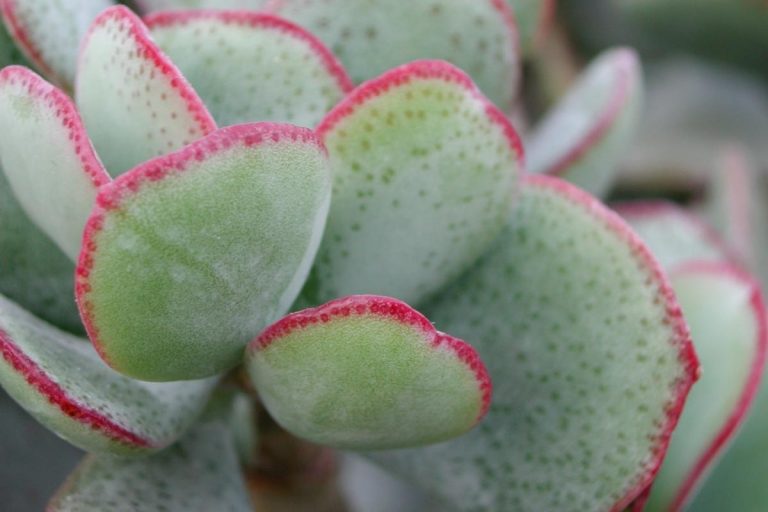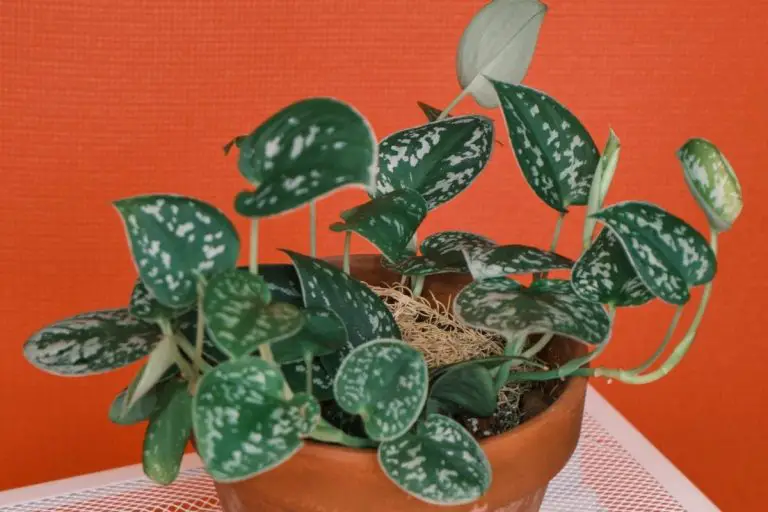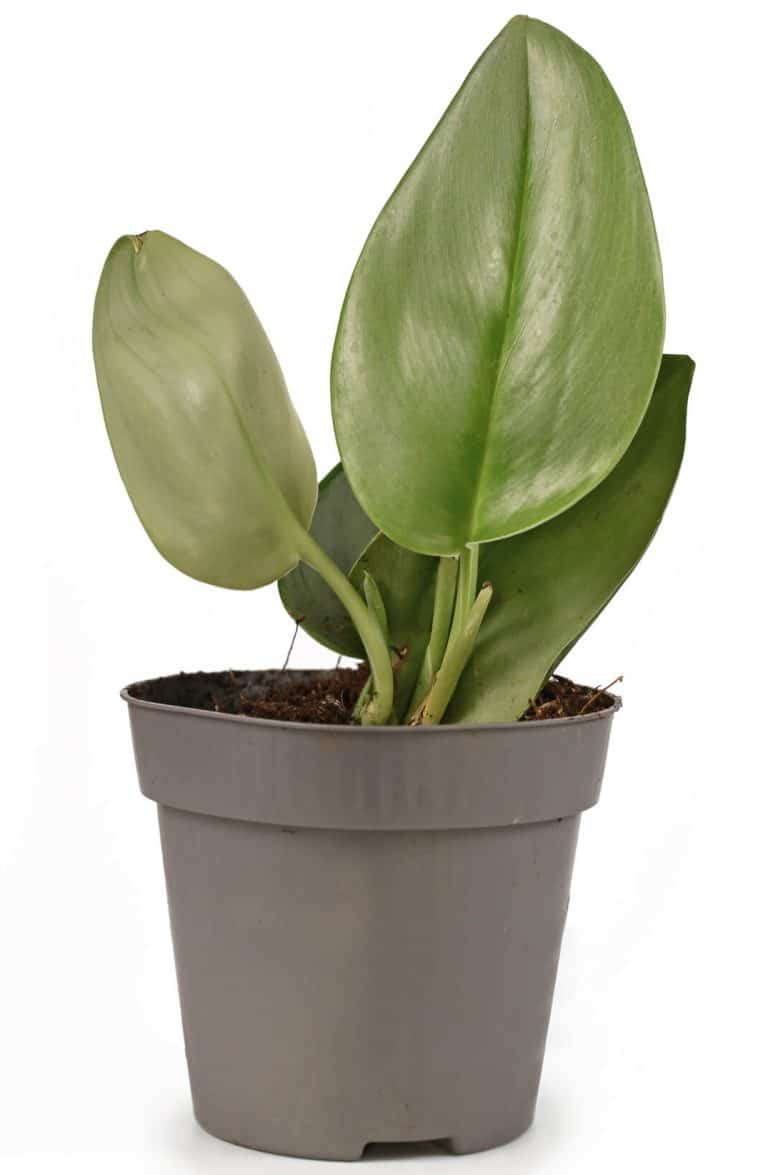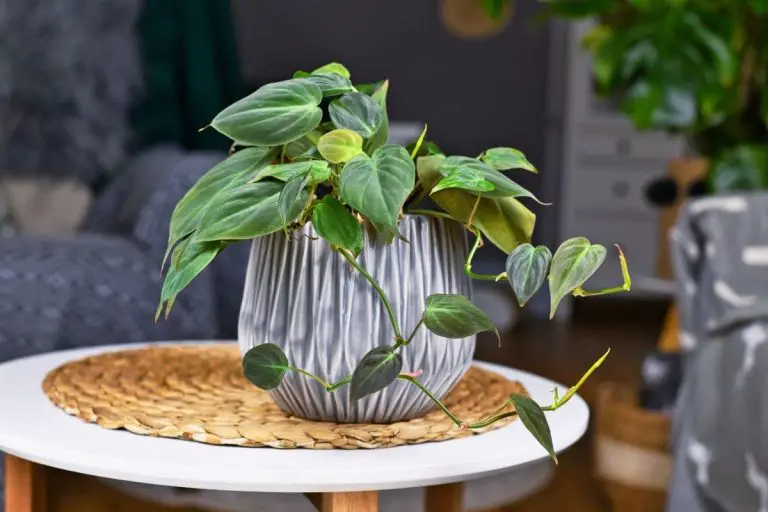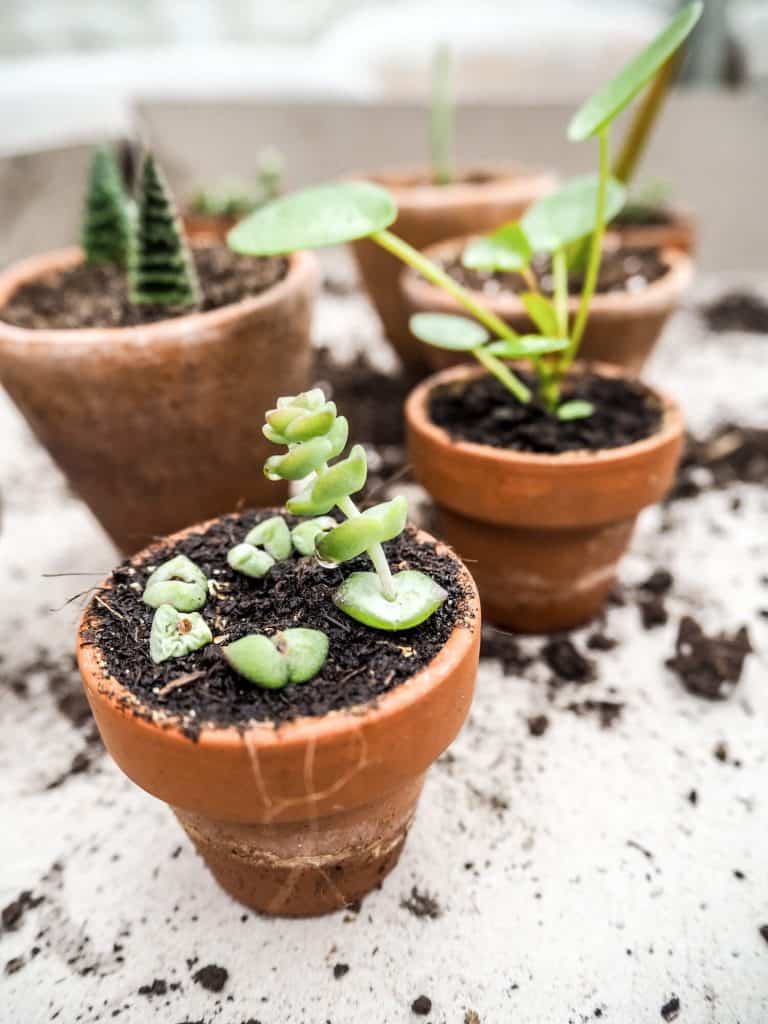Peperomia Polybotrya: Comprehensive Care Guide
Peperomia Polybotrya is a great addition to any home, as it adds a vibrant and fresh look to a dull space of any size while at the same time, helping to purify the air at home.
For homeowners who are looking for a small plant that does not take up a huge area, Peperomia Polybotrya is the plant for you.
Peperomia Polybotrya, also commonly known as Peperomia Raindrop or Coin Leaf Peperomia, originates from South America and can be found growing in tropical rainforests in Colombia and Peru.
This petite plant is hardy, low-maintenance and NASA research shows that Peperomia’s foliage purifies the air, and the level of formaldehyde indoors is reduced by 47%.
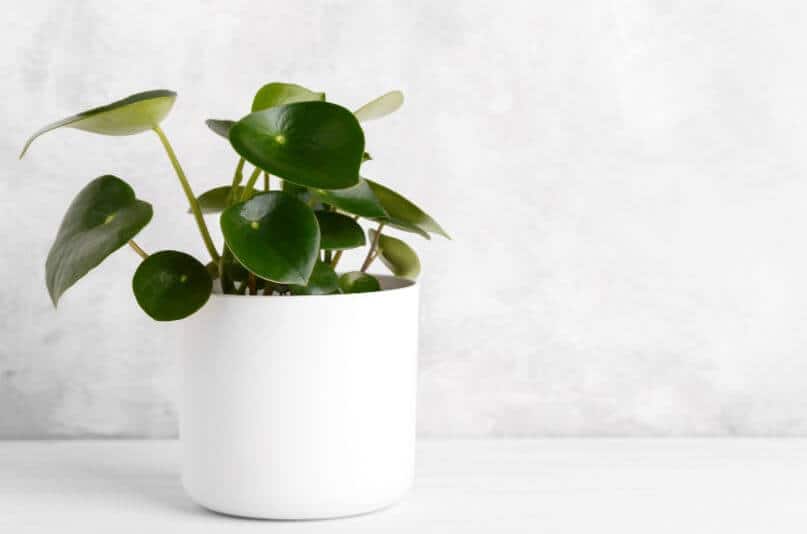
DISCLAIMER
Some of the links on here are affiliate links and I may earn if you click on them, AT NO EXTRA cost to you. Hope you find the information here useful! Thanks.
Related Articles:
- Begonia Maculata Care: Best Essential Tips
- All You Need To Know About Propagating Peperomia
- How to Care for Philodendron Verrucosum: Essential Tips
- Monstera Siltepecana- The Ultimate Guide for Healthy Growth
How Do You Care For Peperomia Polybotrya?
Peperomia Polybotrya is suitable for beginners who are looking to own indoor plants.
It is not difficult to look after, as long as you fulfil the plant’s basic requirements on water, light, soil, and temperature.
If you are able to recreate their native growing environments inside your home, rest assured this plant will thrive and achieve optimum growth.
Let me walk you through Peperomia Polybotrya care tips in detail so that you will have a healthy and gorgeous raindrop plant at home.
What Are The Key Features of Peperomia Polybotrya?
Peperomia Polybotrya has thick, glossy, dark green leaves. The heart-shaped leaves resemble raindrops therefore this plant is also commonly known as Peperomia Raindrop.
This gorgeous plant can grow up to 15 inches tall with proper attention and care from plant owners.
If you keep this plant healthy and happy, you may find a cluster of green-tipped white flowers that look like mouse tails with a mild fragrance. Unfortunately, these flowers do not last long.
The rare variegated version is known as Peperomia Polybotrya Variegata with bright green and spotted white leaves.
Does Peperomia Polybotrya Raindrop Need Sunlight?
Peperomia Polybotrya enjoys bright, indirect sunlight, but does not mind artificial light as well.
It is recommended to place this adorable petite plant at the window facing east or west to enjoy sufficient sunlight for optimum growth.
Although Peperomia Raindrop enjoys sunlight, they do not fare well when placed directly under the sun. The leaves will experience sunburn if left exposed to direct sunlight for an extended period of time.
If you are using artificial light, place the plant about five inches away from the lights.
What Type of Soil Is Suitable for Peperomia Polybotrya?
Peperomia Polybotrya grows better in well-draining potting soil mix and this helps to avoid root rot caused by waterlogged soil.
Get this Potting mix that will help you grow plants twice as big thanks to its firm foundation and key nutrients!
As this coin leaf peperomia has a weak root system, it is extremely important to use the right soil that retains sufficient water and is able to remove excess water through the pot drainage hole.
You can prepare your own customized potting soil by:
- mixing two-part of sand (40%),
- two-part of potting soil (40%), and
- one part of perlite (10%).
Perlite is an amorphous volcanic glass with high-level water content. It retains nutrients that plants need and helps to improve soil aeration.

Do You Need to Fertilize Peperomia Raindrop?
Fertilizing is an essential part of Raindrop Peperomia care so that the plant can absorb key nutrients to stay healthy and beautiful during the growing season.
Indoor houseplants get their nutrients from the soil and after a few months, the nutrients will be fully consumed. This is where fertilizer plays an important role to continue the supply of macronutrients including nitrogen, phosphorus, and potassium to your plant.
Each macronutrient is crucial and plays a specific function for plant growth:
- Nitrogen : Helps to achieve foliage growth
- Phosphorus : Helps to stimulate root growth
- Potassium : Helps to strengthen plant cell tissues
Two commonly used fertilizers are liquid fertilizer and slow-release fertilizer which break down nutrients into the soil every time you water the plant.
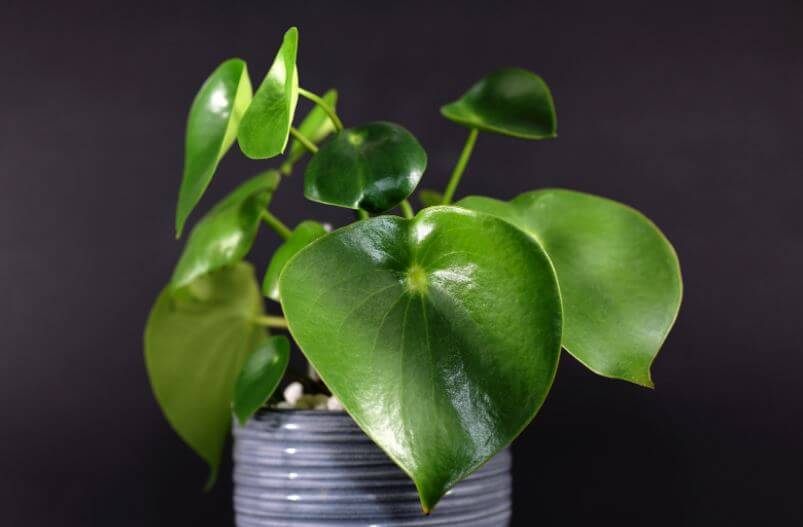
How Much Water Does Peperomia Polybotrya Need?
Peperomia Polybotrya can be watered every week as it has thick leaves that are able to store water.
It is recommended to use rainwater or distilled water to water Peperomia Polybotrya to avoid mineral buildup which causes damage to the roots.
Overwatering is a common problem encountered by plant owners, thus it is important to ensure the pot has drainage holes that allow excess water to flow out.
If you notice yellow or wilting leaves on your Peperomia Polybotrya, it is a sign of overwatering and needs further check before damage to the plant.
What Temperature Does Peperomia Polybotrya Prefer?
Peperomia Polybotrya prefers a warm and humid environment with an ideal temperature range between 18C to 27C.
This slow-growing tropical plant does not fare well in a cooler environment, therefore when the temperature falls below 10 C, you need to move your plant to a warmer space at home to avoid frost damage.
Most plant owners thought frost damage happened when plants are left outdoors during winter. Sometimes, this can occur indoors too if you live in a very cold climate or the plant is left at home without a heater for a few days.
Frost damage causes the leaves’ edges or entire leaves to turn brown and crisp and the best way to revive an injured plant is to remove the affected leaves and stems.
Does Peperomia Polybotrya Like Humidity?
As a native to tropical rainforests in Colombia and Peru, Peperomia Polybotrya loves to be in a humid environment.
Its thick leaves have succulent characteristics that are able to retain moisture and tolerate lower humidity levels.
During winter, you can move this petite plant and place it in the kitchen or bathroom area where the humidity level is higher than other spaces in the house.
Alternatively, you can mist the plant weekly or invest in a small humidifier that does not break your wallet.
Does Raindrop Peperomia Attract Pest?
This hardy plant rarely faces pest infestation but if your plant has been neglected and does not receive proper raindrop plant care, do not be surprised if you find pests crawling on the leaves.
These are the two common pests found on Raindrop Peperomia leaves:
Small, pale insects that suck plant sap and cause stunted growth and plant death if not treated fast. If you noticed cotton look-alike spots all over your plant, it is most likely been attacked by mealy bugs.
This tiny mite feeds on the sap of plants and absorbs the leaf cells. If you find mottled, yellowing leaves with brown speckles on your plant, it is a clear sign of red spider mites infestation.
One of the most common and natural methods to combat this pest infestation is to use neem oil extract and spray the diluted extract on the entire plant.
Neem oil is an organic insecticide and it is safe to use for indoor houseplants and around pets and children at home.
How Do You Prune Peperomia Polybotrya?
When you notice wilting and yellowing leaves, damaged stems, or overgrown branches, you need to start pruning your Peperomia Polybotrya.
Peperomia Polybotrya will benefit from regular pruning activity as it will help to keep pests away and stimulate growth with improved airflow to the plant.
Pruning may seem to be an easy task but you need to use the correct tool and if it is done wrongly, you might expose your plant to disease.
Before pruning, do remember to disinfect the knife or scissors with the disinfectant cleaner to eliminate harmful pathogens and avoid fungal disease.
How Do You Propagate Peperomia Polybotrya?
Other than being a fuss-free plant, it is actually pretty easy to propagate Peperomia Polybotrya and succeed on your first try.
This raindrop plant can be propagated using the stem or leaf cutting method from the mother plant in soil or water.
I have listed down a step-by-step propagation method using stem cutting in soil:
Step 1: Use a clean, sharp knife to remove a stem cutting with several leaves attached at the top. Ensure that the cutting is about two to four inches long below a node.
Step 2: Insert the cutting into a small container that is filled with moist potting soil mixture.
Step 3: Place the container at a spot that has a higher humidity level and access to indirect sunlight.
Step 4: Once the roots have developed and reached an inch long, transfer them to a new pot filled with fresh soil mixture.
Step 5: Keep watering the newly potted plants and this will help them to adapt to their new home.
Propagation using stem cutting in water involves the same process except water is used as a medium instead of soil in Step 2.
If you cannot find an area with a higher humidity level at home, you can cover the plant with a huge plastic bag to create a humid environment.
When Should You Repot Peperomia Polybotrya?
Repotting with new soil should be done every one to two years as this will help to provide fresh nutrients to Peperomia Polybotrya.
You can choose to use the same pot or pick one size bigger pot when repotting your plant and it is important to choose the right size as bigger plants require more soil.
If you notice your plant is growing slower than normal during spring and summer, soil drying up faster than normal, or roots growing through the drainage hole at the bottom, it is a good time to re-pot.
This repotting activity should be done during the spring season before the growing season starts.
Is Peperomia Polybotrya Toxic?
Most indoor houseplants are considered toxic due to the presence of calcium oxalate which will cause intense mouth pain when consumed.
Not many plants are pet-friendly and pet owners usually are reluctant to own indoor plants for fear of accidental poisoning of their pets.
Peperomia Polybotrya is a non-toxic plant and is safe to have at home among pets and children.
However, if your pets accidentally chewed on some parts of this plant and they were experiencing discomfort, rush your pets to the nearest veterinarian immediately.
Is Peperomia Polybotrya a Chinese Money Plant?
Peperomia Polybotrya is often mistaken as Pilea Peperomioides or Chinese Money Plant as both share many similar characteristics such as broad, flat leaves and the leaves are in dark green colour.
In reality, both originate from different plant families.
Pileas belongs to the Urticaceae family and comes from Southern China. Meanwhile, Peperomias is part of the Piperaceae family found in South America.
Besides that, Pilea Peperomioides has round-shaped leaves while Peperomia Polybortrya has heart-shaped leaves which is clearly noticeable if you put them next to each other.
Unique Tips for a Happy Peperomia Polybotrya
- Use a chopstick to loosen the soil gently before watering as this will allow the air to flow easily to the root area.
- Avoid fertilizing when the soil is dry as this will cause damage to Peperomia Polybotrya’s weak root system.
- Water Peperomia Polybotrya a day before repotting activity as this will ensure the plant is hydrated which will reduce the risk of shock.
- The best time to prune and propagate Peperomia Raindrop is early spring when they are actively growing.
- Use a weather hygrometer to monitor the temperature and humidity level indoors.
- Clean the leaves by using a wet cloth and wipe off the dust accumulated on the surface.
- Put this plant at East facing windows to obtain the best sunlight.
Conclusion
Peperomia Polybotrya makes such a good plant for beginners as it is low-maintenance, does not require a lot of attention, and can fit small spaces in your home.
This petite ornamental plant can be placed by the windowsill or on the table while acting as a natural purifier at your home.
If you are looking for a non-toxic, pet-friendly, gorgeous-looking indoor plant that is easy to care for, Peperomia Polybotrya is the plant for you.




